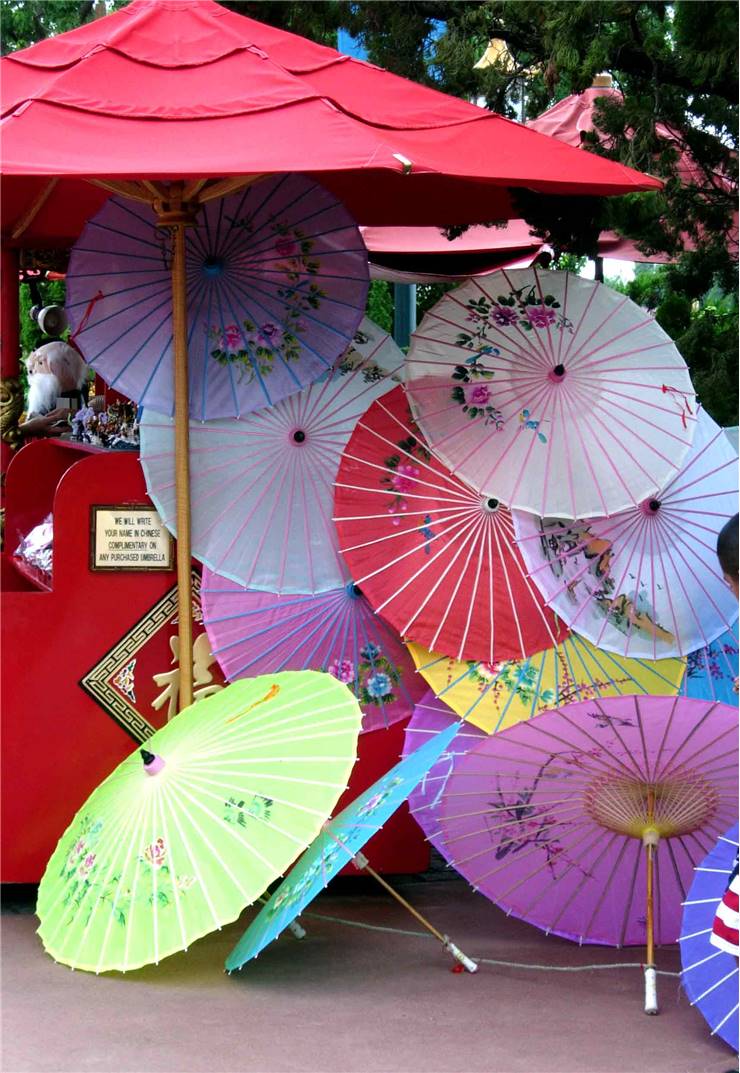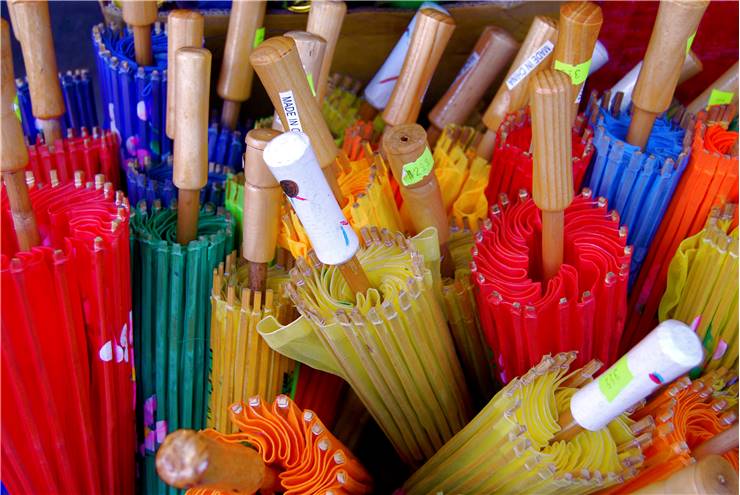History of Parasol - Who invented Parasol?
History of parasol reaches much further back than those of umbrella. Discovered countless millennia ago parasol finally evolved into modern form around 4000 years ago in ancient Egypt, Assyria and China. Initially made from natural sources (tree leaves, eucalyptus and palm branches), advancement of technology finally enabled creation of parasols with their canopy made from animal skins, cloth, and other materials (such as very popular and expensive paper umbrellas in 9th century BC China). Because of their high cost and limited manufacture, parasols of that early age were almost exclusively used by nobility, royalty and clergy, symbolizing wealth and power. Another very important cause of parasols popularity was fashion, which often demanded that rulers and nobility carry pale skin that was not tanned by sun (a tradition that survives even until today in Japan, where pale skin is regarded as one of the most important factors of female beauty).
During late 1st millennia BC, parasols spread to Greece and Rome where they were used as integral fashion accessory to the wealthy females. By then parasols were made from many exotic materials, they were collapsible and able to withhold rain for a short periods of time. Sadly, after the fall of Roman Empire parasols almost disappeared from European soil. The only remaining home for parasols remained in church, where they were used in various ceremonies. Opening of the trade routes to Asia finale enabled the umbrellas and parasols to reach continental Europe where renaissance nobility females accepted this newfound tool and made it one of the principal parts of their fashion and culture. After initial adoption in Italy and France, parasols easily found their home in England where they become extremely popular in female circles of high stature. Owning a parasol (often dozens of them, all matching specific outfit) signified their status and enabled them to maintain pale skin, then viewed as a symbol of wealth. During 18th and 19th century parasols remained extremely popular among European and American females, and were viewed as absolutely essential part of lady's outfit (same as their gloves, hat, shoes and stockings). By the early years of 20th century, waterproofed umbrellas started gaining more and more popularity in general population, which slowly made high value parasols outdated and later on unfashionable. By 1920s, fashion dictated that noble and wealthy females need to have dark tanned skin, as a proof of their beach lifestyle.

In modern times, constant fashion changes and health concerns have slowly enabled resurgence of parasols in general population. As the concerns of potentially harmful UV radiation slowly became more apparent, fashionable personal black parasols that block that radiation started to gain popularity all across the world. Of course, similar health conscious changes were adopted even for stationary parasols that can be found in front of the street stores, beaches and other open sunny areas.



